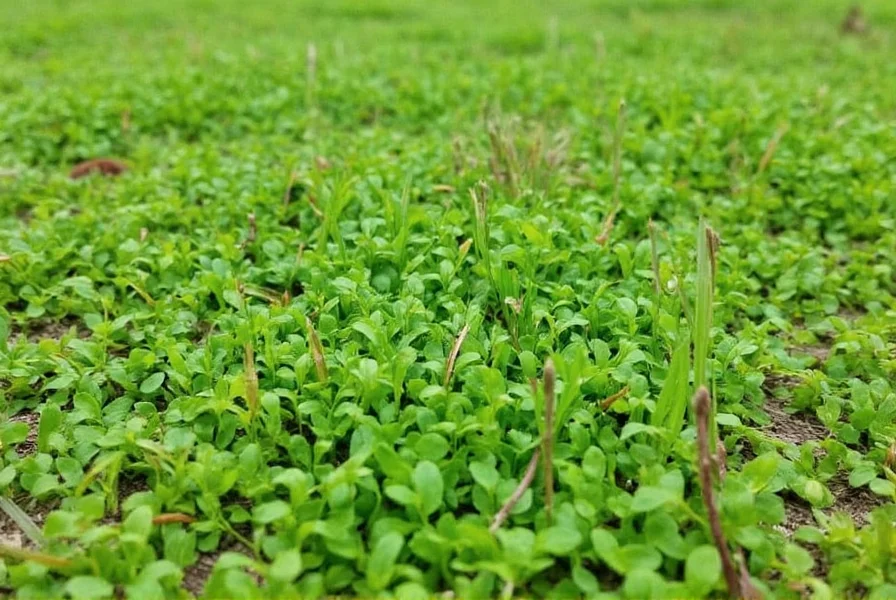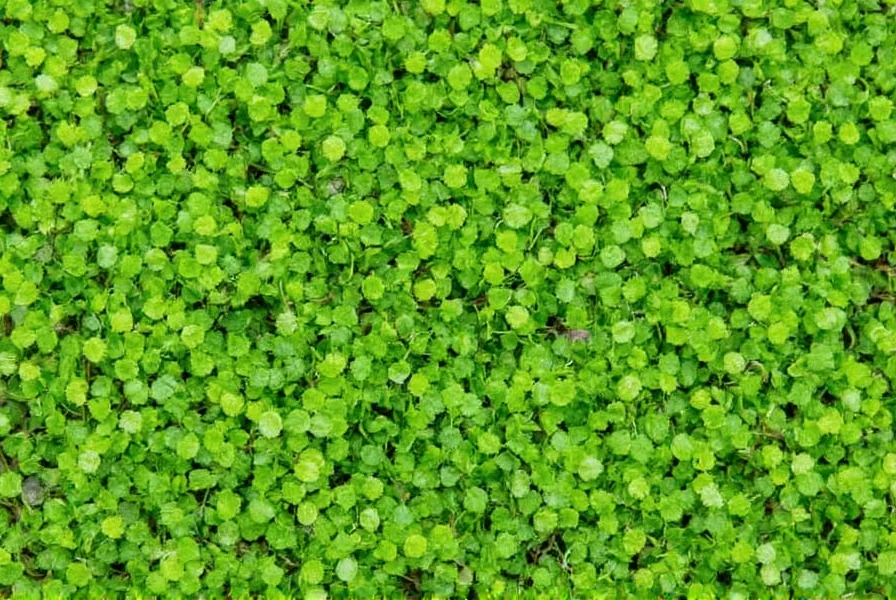Homeowners seeking eco-friendly landscaping solutions increasingly turn to micro clover seed as a practical replacement for resource-intensive traditional lawns. This specialized variety of white clover has gained popularity among environmentally conscious gardeners for its ability to create attractive, functional ground cover with minimal maintenance requirements. Understanding the specific characteristics and proper implementation techniques ensures optimal results when transitioning to this sustainable lawn option.
What Makes Micro Clover Different From Regular Clover?
Micro clover (Trifolium repens var. pipolina) represents a selectively bred cultivar of white clover with distinct advantages for lawn applications. While standard white clover typically grows 6-12 inches tall with larger leaves and more prominent flower heads, micro clover maintains a compact 4-6 inch height with significantly smaller leaflets measuring approximately 5-8mm wide. This refined variety demonstrates reduced flowering compared to traditional white clover, minimizing the visual distraction of white blooms while maintaining all the ecological benefits.
The development of micro clover seed specifically addressed common homeowner concerns about conventional clover lawns. Through careful selection, breeders created a strain that integrates seamlessly with turfgrass or functions as a standalone ground cover without the aggressive spreading tendency of standard varieties. This makes micro clover particularly suitable for residential lawns where a uniform appearance matters.
Environmental and Practical Benefits of Micro Clover Lawns
Micro clover seed establishes lawns that deliver multiple environmental advantages while reducing homeowner workload. As a legume, this plant forms a symbiotic relationship with nitrogen-fixing bacteria in root nodules, converting atmospheric nitrogen into plant-available form. This natural process eliminates the need for synthetic nitrogen fertilizers, reducing both costs and environmental impact.
| Characteristic | Micro Clover Lawn | Traditional Grass Lawn |
|---|---|---|
| Water Requirements | 30-50% less water | Regular deep watering needed |
| Mowing Frequency | Monthly or less | Weekly during growing season |
| Fertilizer Needs | None required | 3-4 applications annually |
| Drought Tolerance | Excellent (goes dormant) | Varies by species |
| Foot Traffic Tolerance | Good (recovers quickly) | Varies by species |
Additional benefits include exceptional drought tolerance once established, with micro clover entering dormancy during extreme dry periods rather than dying. The dense growth habit naturally suppresses weeds by blocking sunlight to weed seeds. Unlike traditional lawns, micro clover remains green throughout summer heat without supplemental watering in many regions. The low-growing nature reduces mowing frequency to approximately once monthly if desired, though many homeowners maintain a natural height without mowing.

Planting Micro Clover Seed: Complete Guide
Successful establishment of micro clover seed requires proper timing and technique. The optimal planting window occurs in early spring (March-May) or early fall (August-September) when soil temperatures reach 50-65°F (10-18°C). These conditions promote ideal germination while allowing plants to establish before extreme summer heat or winter cold.
Prepare the planting area by removing existing vegetation and loosening the top 1-2 inches of soil. Micro clover seed requires direct soil contact for proper germination, so avoid burying seeds deeper than 1/8 inch. The recommended seeding rate ranges from 1-2 pounds per 1,000 square feet when establishing a pure micro clover lawn, or 1/2 pound per 1,000 square feet when overseeding existing turf.
Maintain consistent soil moisture during the critical germination period, which typically occurs within 7-15 days. Avoid letting the soil surface dry out completely during this establishment phase. Once seedlings reach 2-3 inches in height, gradually reduce watering frequency while increasing duration to encourage deeper root development.
Maintenance Requirements for Micro Clover Lawns
One of the primary advantages of micro clover seed is the significantly reduced maintenance compared to traditional lawns. After establishment, these lawns require minimal intervention while maintaining an attractive appearance. Watering needs decrease substantially once the root system develops, with established micro clover typically requiring supplemental irrigation only during extended drought periods exceeding three weeks without rain.
Mowing remains optional with micro clover lawns. Many homeowners prefer to maintain a natural height of 4-6 inches, eliminating mowing entirely. Those desiring a shorter appearance can mow to 2-3 inches every 3-4 weeks during peak growing season. Unlike grass, micro clover doesn't develop thatch, eliminating the need for dethatching. The natural nitrogen fixation process removes fertilizer requirements, though a light application of phosphorus-rich organic fertilizer in spring may encourage denser growth in nutrient-poor soils.
Weed control generally occurs naturally through the dense growth habit of established micro clover. For persistent weeds, hand-pulling proves more effective than chemical treatments, which could harm the clover. During winter in colder climates, micro clover enters dormancy but typically rebounds vigorously in spring without reseeding.
Common Challenges and Solutions
While micro clover lawns offer numerous benefits, certain challenges may arise during establishment or maintenance. Understanding these potential issues helps ensure long-term success with this alternative ground cover.
Initial Establishment Period: Micro clover seed requires consistent moisture during germination. During dry spells, water lightly twice daily until seedlings emerge. Using a light straw mulch (1/8 inch layer) helps retain moisture without blocking light.
Weed Competition: Existing weeds can outcompete young micro clover seedlings. Prepare the planting area thoroughly by removing existing vegetation before seeding. Overseeding existing lawns works best when combined with aeration to ensure good seed-to-soil contact.
Foot Traffic Damage: While established micro clover tolerates moderate foot traffic, heavy use during establishment can damage young plants. Consider temporary barriers during the first 4-6 weeks after planting to protect developing seedlings.
Yellowing During Drought: Micro clover naturally goes dormant during extended dry periods, turning yellow but recovering when moisture returns. Avoid excessive watering during dormancy, as this can promote fungal diseases.
When Micro Clover Might Not Be the Best Choice
Despite its many advantages, micro clover seed may not suit every landscaping situation. Understanding these limitations helps homeowners make informed decisions about lawn alternatives.
Micro clover performs poorly in dense shade conditions, requiring at least 4-6 hours of direct sunlight daily for optimal growth. In heavily shaded areas, alternative ground covers like moss or shade-tolerant grass blends may prove more successful. Similarly, micro clover struggles in areas with constant, heavy foot traffic such as sports fields or high-traffic pathways.
Homeowners with severe pollen allergies should consider that while micro clover produces less pollen than traditional grasses, it still releases some during its flowering period. The reduced flowering of micro clover compared to standard white clover minimizes this concern for most allergy sufferers, but extremely sensitive individuals may prefer other options.
In regions with extremely cold winters (USDA zones 3 and below), micro clover may not survive prolonged freezing temperatures without snow cover. Gardeners in these areas might consider it as a seasonal ground cover or explore cold-hardy alternatives.
Frequently Asked Questions
How much micro clover seed do I need per square foot?
For a pure micro clover lawn, use 1-2 pounds of seed per 1,000 square feet (0.001-0.002 pounds per square foot). When overseeding existing turf, apply 1/2 pound per 1,000 square feet. Proper seeding rates ensure optimal density without overcrowding seedlings.
Does micro clover attract bees and is it safe for children?
Micro clover produces minimal flowers compared to standard white clover, resulting in significantly fewer bees. The small amount of nectar it produces attracts primarily small native bees rather than honeybees. Micro clover lawns are safe for children to play on, as the plant contains no toxic compounds and creates a soft, resilient surface.
How long does it take for micro clover seed to germinate?
Micro clover seed typically germinates within 7-15 days when soil temperatures remain between 50-65°F (10-18°C) and moisture is consistent. Germination may take longer in cooler or drier conditions. The establishment period from seed to a functional lawn generally requires 4-6 weeks under optimal conditions.
Can I mix micro clover seed with grass seed?
Yes, micro clover seed blends well with fine fescue or other shade-tolerant grass varieties. Use a ratio of 1 part micro clover to 4 parts grass seed for optimal results. This combination provides the durability of grass with the environmental benefits of clover while maintaining a traditional lawn appearance.
Does micro clover lawn require special equipment for maintenance?
No special equipment is needed for micro clover lawn maintenance. Standard lawn mowers work well if mowing is desired, though many homeowners eliminate mowing entirely. Regular watering equipment suffices for irrigation needs. Micro clover requires no specialized tools, making it accessible for all homeowners without additional investment.











 浙公网安备
33010002000092号
浙公网安备
33010002000092号 浙B2-20120091-4
浙B2-20120091-4